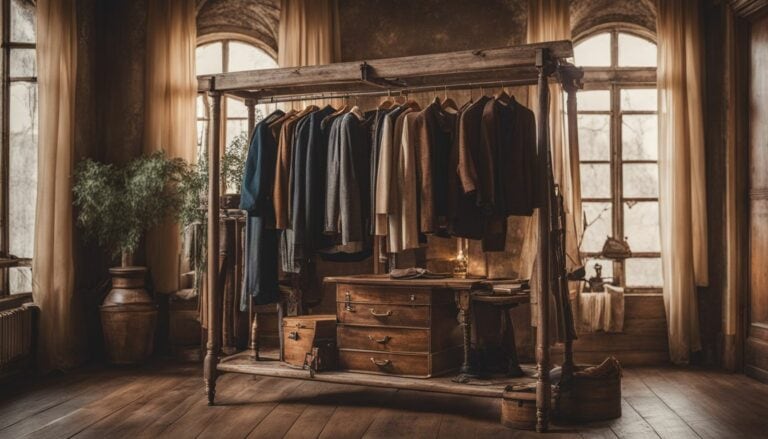Cupro Fabric Guide: Unlocking the Secret to Luxurious Textiles
Are you curious about the world of sustainable fabrics and have heard about cupro, but aren’t sure what it is? Cupro is a fascinating ‘regenerated cellulose‘ fabric derived from cotton waste.
In this blog post, we’ll dive deep into understanding cupro fabric – its manufacturing process, benefits, sustainability aspects and care instructions. Keep reading to explore more about this unique textile that could be your new favorite for fashion and home décor!
Key Takeaways
- Cupro fabric is a sustainable textile made from recycled cotton waste, reducing waste in the industry.
- It has similar properties to silk, being soft, shiny, and durable.
- Cupro fabric offers breathability and moisture-wicking properties, making it suitable for summer clothes or active wear.
- It has versatile applications in both fashion and home decor industries.
What is Cupro Fabric?
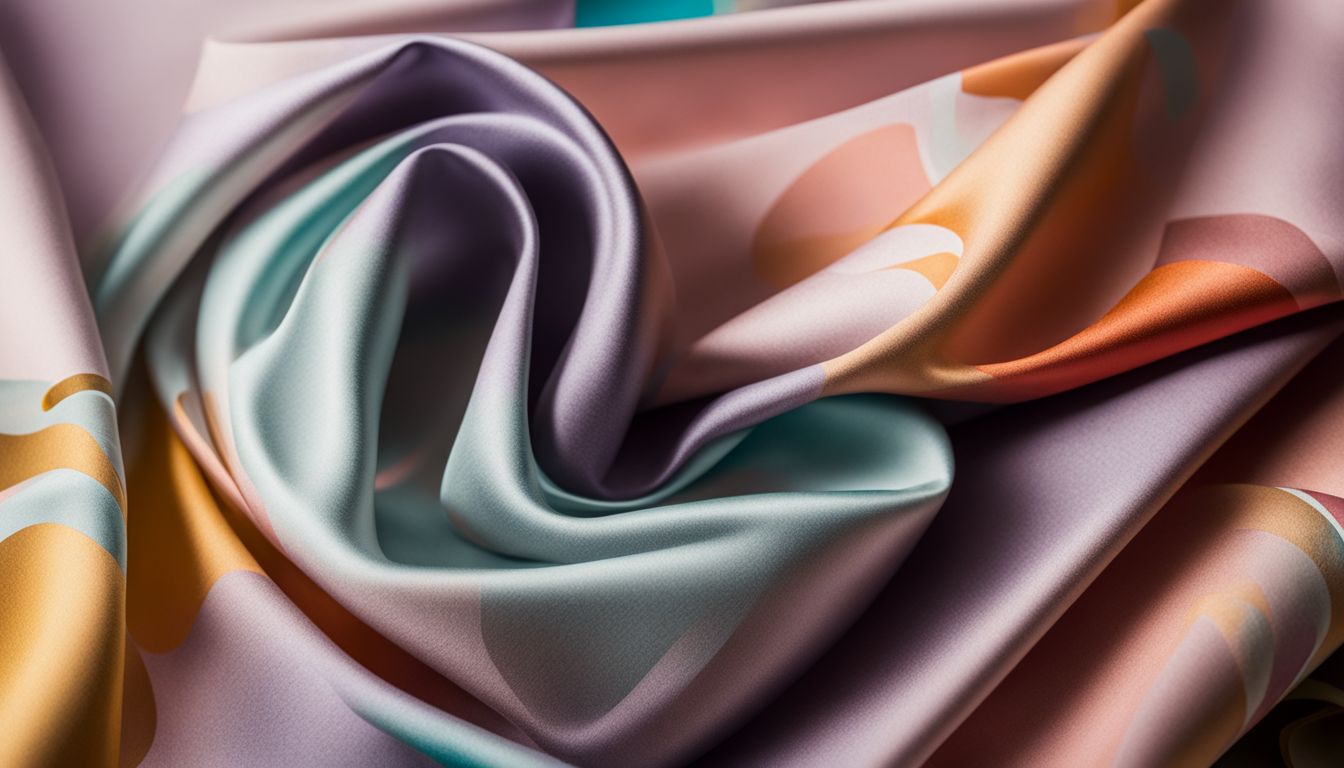
Cupro fabric is a type of textile that is known for its luxurious silky feel and versatile applications in fashion and home decor.
Definition and Manufacturing Process

The mixture then turns into a semi-synthetic fiber. So, cupro is born out of reused stuff from the cotton industry. This means it helps to cut down on trash and makes use of resources again in a good way! It feels much like silk but comes from plants instead of animals.
Properties and Characteristics of Cupro Fabric

It is like silk. It is soft and shiny but also tough. Cupro can take a lot of wear and tear. The color stays bright, even after washing it many times. It does not shrink when you wash it, too! This kind of fabric lets air pass through easily which keeps you cool in hot weather.
It soaks up sweat quickly as well to keep your skin dry. One special thing about cupro material is that it uses cotton waste to make new fabric! That helps us cut down on waste and save the planet.
Benefits of Cupro Fabric

Breathability and Moisture-Wicking Properties

This fabric helps you stay cool and dry. It lets air pass through easily. This is called breathability. Cupro also pulls sweat away from your skin to the outside of the fabric. Then it dries fast.
This is moisture-wicking. These traits make cupro a good choice for summer clothes or active wear.
Luxurious and Silky Feel

Cupro fabric is loved for its luxurious and silky feel. It has a smooth texture that feels incredibly soft against the skin. When you wear cupro clothing, it drapes beautifully and gives a sophisticated look.
The fabric’s silk-like qualities make it perfect for creating elegant and high-end fashion pieces. Whether it’s a flowing dress or a tailored suit, it adds a touch of luxury to any outfit.
This makes it popular not only in the fashion industry but also in home decor, where it can be used to create luxurious bedding, curtains, and upholstery. So if you’re looking for a fabric that offers both comfort and elegance, cupro is an excellent choice.
Versatile Applications in Fashion and Home Decor
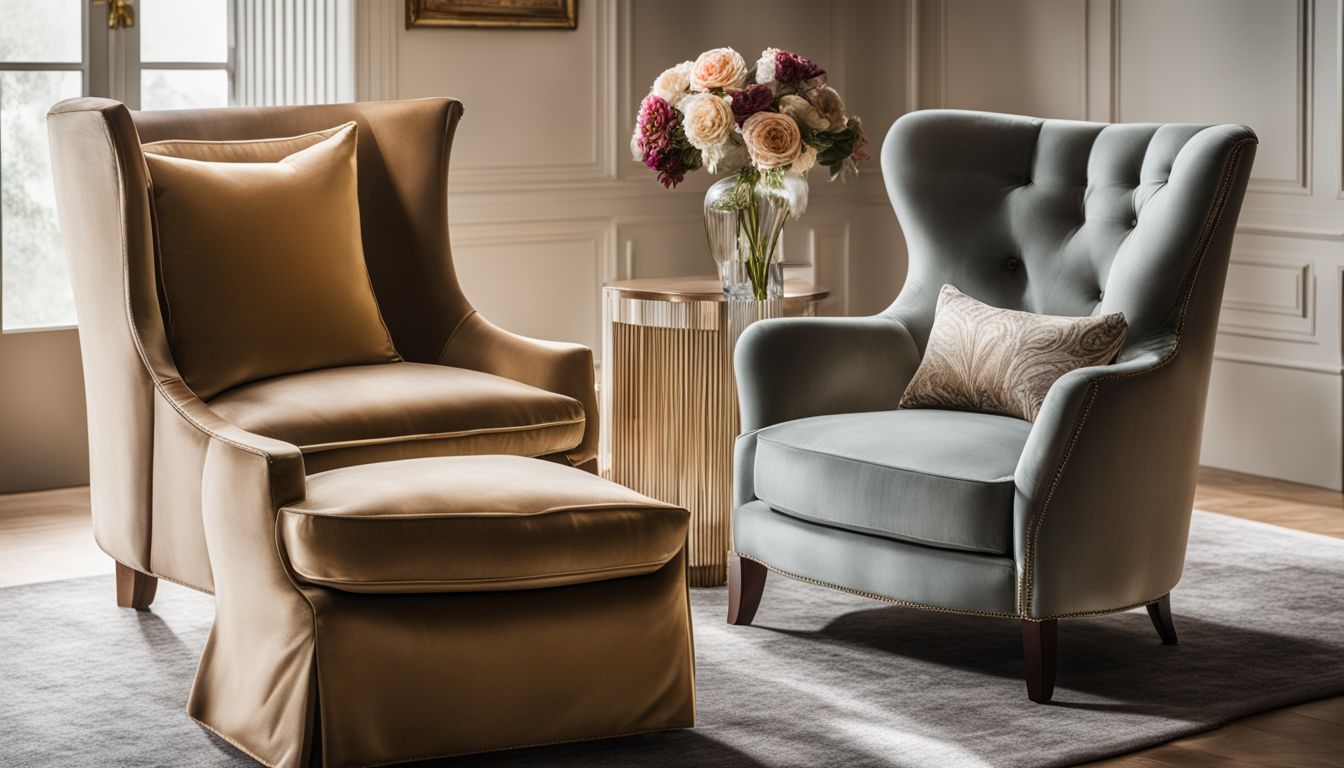
This fabric has versatile applications in both the fashion and home decor industries. In fashion, it is commonly used to create elegant dresses, skirts, blouses, and shirts.
Its luxurious and silky feel gives garments a high-end look and makes them comfortable to wear. It’s drapability also allows for flowing designs that flatter different body types.
Additionally, cupro fabric can be blended with other fabrics like cotton or spandex to enhance its properties.
In home decor, it is often used for upholstery, curtains, and pillow covers. Its soft texture adds a touch of luxury to furniture pieces while providing comfort for those using them.
Sustainability of Cupro Fabric

Use of Renewable and Natural Resources

It is marketed as a sustainable material because it uses renewable and natural resources. It is made from cotton waste, which is a byproduct of the cotton industry. Cotton itself comes from plants that require water to grow, so cupro indirectly benefits from this resource.
Additionally, cupro fabric manufacturing involves using the cellulose of cotton clothing and exposing it to a mixture of ammonium and copper. This process helps recycle and repurpose materials that would otherwise go to waste.
By utilizing these renewable and natural resources, it reduces its environmental impact and contributes to a more sustainable textile industry overall.
Recycling and Upcycling Potential

Cupro has great recycling and upcycling potential. Since it is derived from cotton waste, it can be recycled and transformed into new fabrics or materials. This reduces the need for virgin resources and helps in minimizing waste.
It can also be upcycled by giving old garments or textiles a new life through creative processes like repurposing or redesigning them into new products. By promoting recycling and upcycling of it, we contribute to a more sustainable fashion industry and reduce the environmental impact of textile manufacturing.
Reduced Environmental Impact Compared to Other Fabrics

This fabric offers a reduced environmental impact compared to other fabrics. This is because cupro is made from cotton waste, which is a byproduct of the cotton industry. By using this material, we can reduce waste and make use of resources that would otherwise go unused.
Additionally, cupro is made through a process that uses less water and energy compared to other fabrics like polyester or silk. So by choosing cupro fabric, you are making a more sustainable choice for the environment.
Care and Maintenance of Cupro Fabric

Proper care and maintenance of cupro fabric is essential to prolong its lifespan. Follow these washing instructions, storage tips, and solutions for common issues to keep your cupro garments in excellent condition.
Read more to discover how to care for this luxurious fabric.
Washing Instructions
To keep cupro fabric looking its best, follow these simple washing instructions:
- Use cold water: Wash cupro fabric in cold water to prevent shrinking or stretching.
- Gentle cycle: Use the gentle cycle setting on your washing machine to protect the delicate fibers of cupro fabric.
- Mild detergent: Use a mild detergent specifically designed for delicate fabrics. Avoid using bleach or harsh chemicals that can damage the fabric.
- Hand wash option: If preferred, you can also choose to hand wash cupro fabric using cool water and a gentle detergent.
- Avoid soaking: Do not soak cupro fabric for too long as it can weaken the fibers and cause color bleeding.
- Air dry: After washing, lay flat or hang cupro fabric to air dry naturally. Avoid using a dryer as high heat can damage the fabric.
- Ironing: If necessary, iron cupro fabric on a low temperature setting while it is still slightly damp to smooth out any wrinkles.
Storage Tips
Here are some storage tips for cupro fabric:
- Store cupro fabric in a cool, dry place to prevent moisture build-up and mildew.
- Avoid storing cupro fabric in direct sunlight, as it can cause discoloration and fading over time.
- Fold cupro fabric neatly to prevent creases and wrinkles. It is best to avoid hanging cupro fabric for long periods of time, as it can stretch and lose its shape.
- Keep cupro fabric away from sharp objects or rough surfaces that could snag or tear the fabric.
- If you need to store cupro fabric for a long period of time, consider using acid – free tissue paper or cotton muslin to protect the fabric from dust and dirt.
- When storing cupro clothing items, such as dresses or blouses, it is recommended to use padded hangers to help maintain their shape.
Common Issues and Solutions
Cupro fabric, like any other fabric, can sometimes encounter common issues. Here are some solutions to those problems:
- Wrinkling: Cupro fabric can wrinkle easily. To reduce wrinkles, gently iron the fabric on the lowest setting or hang it in a steamy bathroom to allow the wrinkles to naturally relax.
- Shrinkage: Cupro fabric may shrink when exposed to high heat or excessive agitation. To prevent shrinkage, wash cupro fabric in cold water and avoid using high dryer settings.
- Color fading: Cupro fabric may fade over time due to exposure to sunlight or frequent washing. To preserve the color, turn the garment inside out before washing and avoid prolonged exposure to direct sunlight.
- Staining: Cupro fabric is prone to staining from spills and dirt. For minor stains, gently blot the area with a damp cloth or use a mild stain remover. Avoid using harsh chemicals that can damage the fabric.
- Pilling: Pilling can occur in cupro fabric with frequent wear and friction. Use a lint roller or a pill shaver to remove pills from the surface of the fabric.
- Odor retention: Cupro fabric may retain odors if not properly cleaned or stored. To eliminate odors, air out the garment outdoors or hang it in a well-ventilated area.
Cupro Fabric Certifications

Cupro fabric has gained recognition in the fashion industry for its sustainable and eco-friendly properties. Several certifications validate its quality and environmental standards.
One of the most prominent certifications is the Oeko-Tex Standard 100, which ensures that cupro fabric is free from harmful substances. Another certification is the Global Recycled Standard, which guarantees that cupro fabric is made from recycled cellulose fibers.
Additionally, cupro fabric can also be certified by Forest Stewardship Council (FSC) or similar organizations to ensure responsible sourcing practices. These certifications assure consumers that they are choosing a sustainable and ethical option when purchasing products made with cupro fabric.
Cupro Fabric in the Fashion Industry
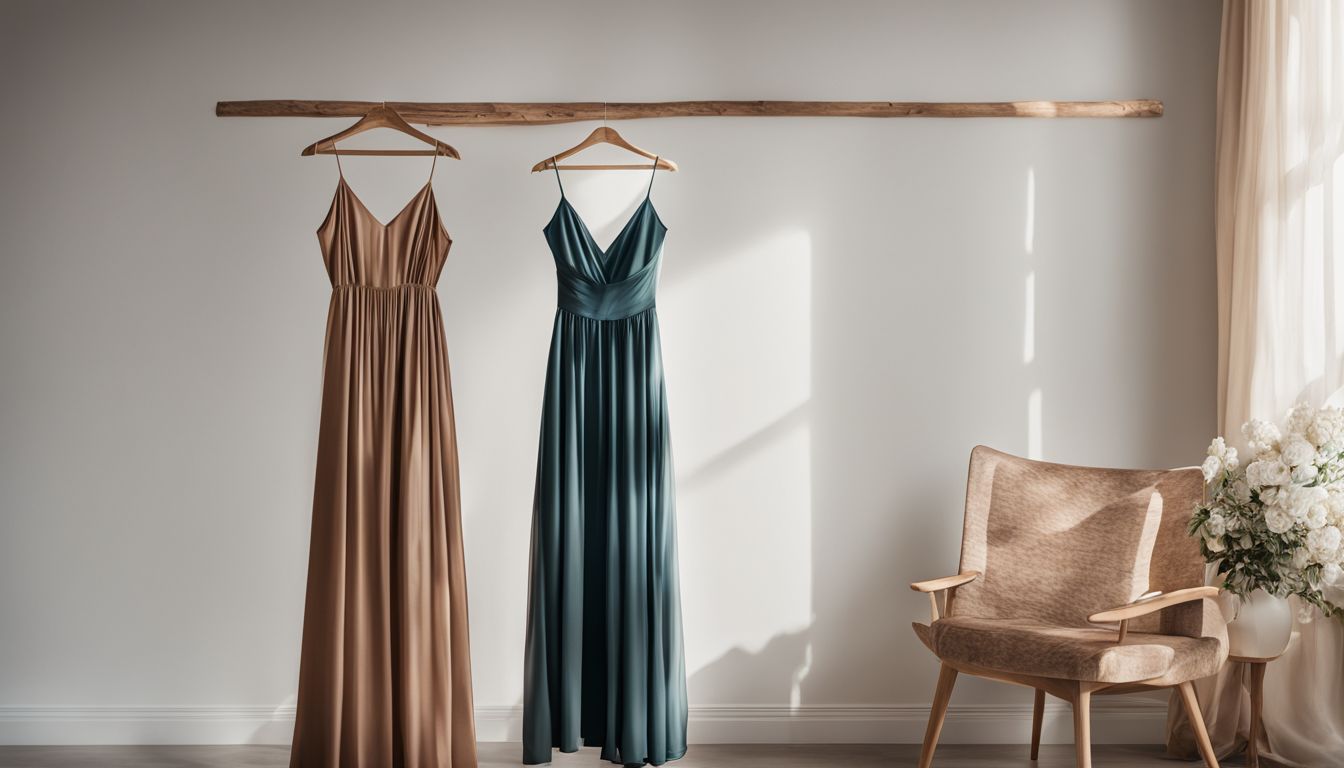
Cupro fabric has gained popularity in the fashion industry due to its luxurious feel and versatile applications, making it a preferred choice for designers in creating clothing and accessories.
Cupro Rayon
Cupro rayon is a type of fabric that belongs to the cupro family, which is derived from regenerated cellulose fibers. It is made from cotton waste and has similar properties to traditional rayon.
Cupro rayon fabric is known for its luxurious and silky feel, as well as its excellent drapability. It is often used in fashion design because it provides a lightweight and breathable option for clothing.
Additionally, cupro rayon is considered to be a vegan alternative to silk since it shares many of the same characteristics without using animal products.
Cupro Rayon Fabric
Cupro fabric, also known as cupro rayon fabric, is a type of fabric that belongs to the rayon family. It is made from regenerated cellulose fibers obtained from cotton waste. The manufacturing process involves treating the cotton clothing with a mixture of ammonium and copper.
Cupro rayon fabric has similar properties to silk, including its luxurious feel, drapability, and breathability. It is often used as a vegan alternative to silk in fashion and home decor applications.
Cupro rayon fabric is considered plant-based and sustainable since it utilizes cotton waste, which is a byproduct of the cotton industry.
Cupro versus Other Fabrics
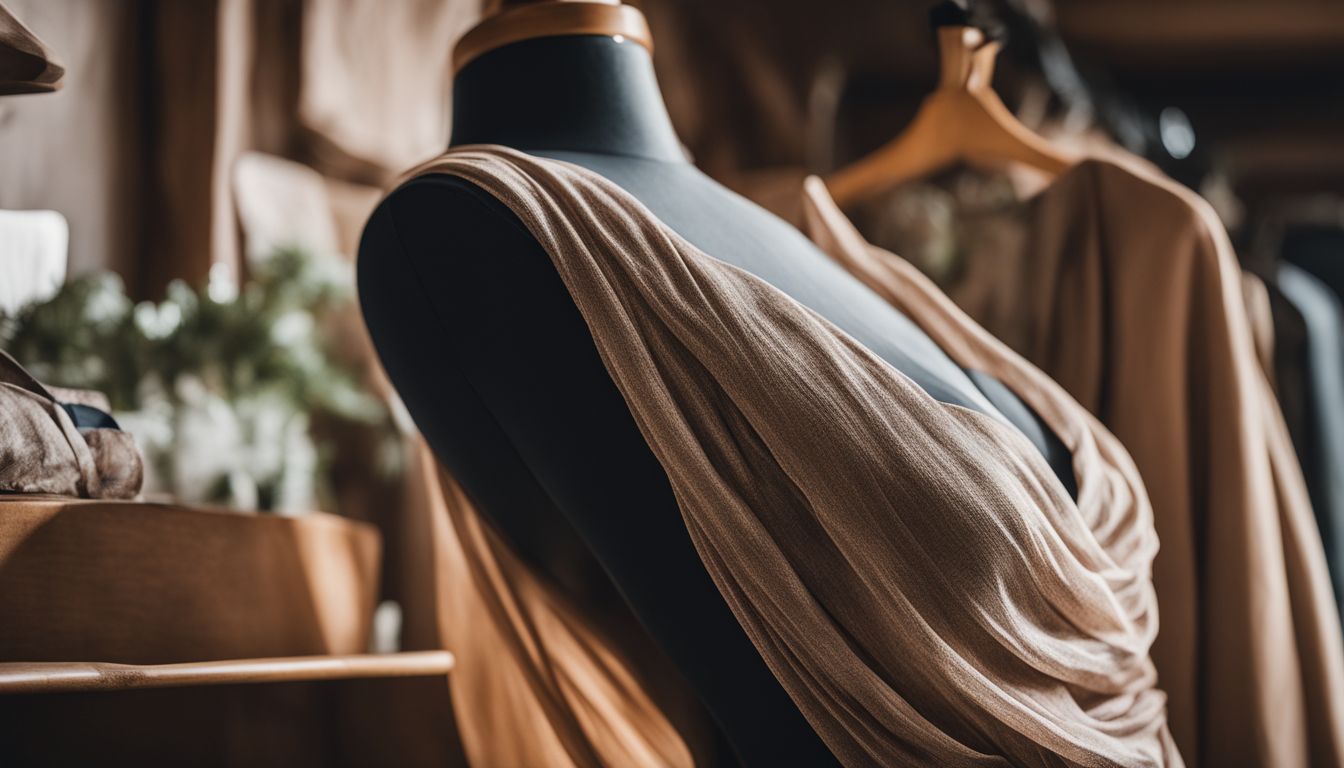
Cupro fabric offers several advantages over other fabrics like cotton, polyester, and silk in terms of breathability, texture, sustainability, and cost.
Cupro versus Cotton
Cupro and cotton, both derived from the cotton plant, possess unique characteristics that set them apart in terms of their feel, usage, and environmental impact.
| Aspects | Cupro | Cotton |
|---|---|---|
| Texture and Feel | Cupro fabric has a silky, luxurious feeling and excellent drapability, similar to silk. | Cotton has a soft feel but lacks the smooth, silky quality of cupro. It is more rigid and less flexible. |
| Manufacturing Process | Cupro is made from the tiny, silky cotton fibers called linter, a byproduct of cotton production. It is produced by dissolving the cellulose of cotton clothing in a solution of ammonium and copper. | Cotton is directly harvested from the cotton plant. The cotton fibers are spun into yarn or thread for use in textiles. |
| Environmental Impact | Cupro is regarded as a sustainable material as it utilizes cotton waste. Its production method is less resource-intensive compared to cotton, leading to reduced environmental impact. | Conventional cotton farming can have a significant environmental impact due to its water-intensive cultivation process and use of pesticides. |
| Moisture Absorption | Cupro fabric possesses excellent moisture-wicking properties and breathability, making it ideal for summer clothing. | Cotton is highly absorbent but may retain moisture longer than cupro, potentially leading to discomfort in hot weather or during physical activity. |
| Sustainability | Cupro, being a byproduct of the cotton industry, is an excellent example of waste utilization and recycling. This adds to its credibility as a sustainable fabric. | While cotton is a renewable resource, its cultivation is known to be resource-intensive, requiring large amounts of water and often involving pesticides. |
Cupro versus Polyester
Cupro and Polyester are both widely used fabrics, each offering their own unique characteristics. However, they differ greatly in terms of their composition, feel, sustainability, care instructions, and price. The following table provides a comparative overview of both fabrics:
| Feature | Cupro | Polyester |
|---|---|---|
| Composition | Cupro is a semi-synthetic fabric made from recycled cellulose of cotton, specifically the linter fibers. | Polyester is a synthetic fabric derived from petroleum-based products. |
| Feel | Known for its silky, smooth texture, often compared to the feel of natural silk. | Typically has a slightly rougher texture than Cupro. Although it can be manufactured to mimic the feel of natural fabrics, it generally lacks the same breathability. |
| Sustainability | Cupro is often touted as a sustainable fabric due to its use of renewable and natural resources. It is also a byproduct of the cotton industry, which reduces waste. | Given its petroleum-based origin, Polyester is less sustainable. It is not biodegradable and its production process can be energy-intensive and polluting. |
| Care Instructions | Cupro requires careful washing and storage, similar to other delicate fabrics. It can be sensitive to heat and harsh detergents. | Polyester is typically more durable and easy to care for, withstanding machine washing and drying. |
| Price | Due to its manufacturing process and the luxurious feel it provides, Cupro fabric tends to be more expensive than many other fabrics. | In general, Polyester is less costly to produce and purchase compared to Cupro and other natural or semi-synthetic fabrics. |
Cupro versus Silk
Cupro and Silk are both sought-after materials in the fashion industry, but they also have their unique characteristics and differences. Below is a comprehensive comparison of these two fabrics.
| Cupro | Silk | |
|---|---|---|
| Origin | Cupro is made from cotton linter, a byproduct of the cotton industry, making it a regenerated cellulose fabric. | Silk is a natural protein fiber produced by silk worms. |
| Texture and Drapability | Cupro fabric has a texture and drapability similar to silk, offering a luxurious and silky feel. | Silk is known for its softness, sheen, and drapability, offering a luxurious feel and look. |
| Sustainability | Cupro is considered a sustainable material as it is made from renewable and natural resources. It is made by exposing the cellulose of cotton to a mixture of ammonium and copper. | While silk is natural, its sustainability is questionable as its production can be resource-intensive and often involves killing of silk worms. |
| Vegan Friendly | Cupro is a plant-based fiber, making it a vegan alternative to silk. | As silk is derived from silk worms, it’s not considered vegan. |
| Care and Maintenance | Cupro fabric requires specific care instructions for washing and storage. It also has the potential to be recycled and upcycled. | Silk requires delicate care and cannot be washed in machines or with regular detergents lest it loses its sheen and softness. |
Vegan Cupro Fabric
Cupro fabric is a popular choice for those seeking vegan alternatives to silk. This plant-based fiber is made from recycled cellulose, specifically the linter fibers of cotton. It offers a luxurious and silky feel, similar to silk, making it ideal for fashion and home decor applications.
Additionally, cupro fabric is breathable and moisture-wicking, ensuring comfort throughout the day. With its sustainability credentials and cruelty-free production process, vegan cupro fabric is gaining recognition as an eco-friendly and ethical choice in the textile industry.
Cupro versus Satin
Cupro fabric and satin are both popular choices in the fashion industry. While cupro is a semi-synthetic fiber made from recycled cotton cellulose, satin is a type of fabric known for its glossy and smooth surface. Cupro has properties similar to silk, such as its luxurious feel and drapability, making it a great vegan alternative to silk. On the other hand, satin is typically made from synthetic fibers like polyester or nylon. While both fabrics have their own unique qualities, cupro stands out for being more sustainable due to its use of recycled cotton waste. So if you’re looking for a silky fabric that also aligns with your eco-conscious values, cupro might be the perfect choice for you!
Rayon Cupro Fabric
Rayon cupro fabric is a type of fabric that belongs to the rayon family. It is made from regenerated cellulose fibers derived from cotton waste. The manufacturing process involves treating the cotton cellulose with a mixture of ammonium and copper.
Rayon cupro fabric has properties similar to silk, such as its luxurious feel and excellent drapability. It is also considered a vegan alternative to silk because it is plant-based and does not involve any animal products.
Rayon cupro fabric provides versatility in both fashion and home decor applications, making it an attractive choice for those looking for sustainable and eco-friendly materials.
Cupro Spandex Fabric
Cupro spandex fabric is a blend of cupro and spandex fibers. Cupro fabric, as mentioned earlier, is made from regenerated cellulose derived from cotton waste. Spandex, on the other hand, is a highly elastic synthetic fiber known for its stretchiness.
Combining these two materials creates a fabric that is not only soft and luxurious like cupro but also has excellent elasticity and flexibility like spandex. The addition of spandex to cupro fabric enhances its comfort and fit, making it suitable for activewear, sportswear, lingerie, and other clothing items that require stretchability.
Cupro spandex fabric offers the best of both worlds – the natural feel of cupro with added stretch for maximum comfort and ease of movement.
Cupro Fabric Use
Cupro fabric is versatile and can be used in various applications. In the fashion industry, it is commonly used for clothing such as dresses, blouses, and skirts due to its luxurious feel and drape.
Cupro fabric is also ideal for creating home decor items like curtains, pillowcases, and upholstery due to its smooth texture. Additionally, cupro fabric is often blended with other materials like spandex or cotton to improve stretchability and durability.
Its versatility makes it a popular choice for both clothing designers and interior decorators alike.
What is Cupro Cotton
Cupro cotton is a type of fabric that combines the properties of cupro and cotton. Cupro fabric, also known as cuprammonium rayon, is made from regenerated cellulose fibers derived from cotton waste.
These silky fibers are then processed with a mixture of ammonium and copper to create cupro fabric. Cotton, on the other hand, is a natural fiber obtained from the cotton plant. By blending these two materials together, cupro cotton offers the best of both worlds – the luxurious feel and drapability of cupro, combined with the comfort and breathability of cotton.
It’s a great choice for those looking for a sustainable and versatile fabric option in their clothing or home decor items.
Cupro Fabric: Cost and Availability

Cupro fabric is known for its luxurious feel and versatility in fashion and home decor. When it comes to cost, cupro fabric can be more expensive than other fabrics like cotton or polyester.
This is because the process of manufacturing cupro involves treating cotton waste with chemicals to create the regenerated cellulose fibers. These additional steps in production contribute to the higher cost of cupro fabric compared to natural fibers.
In terms of availability, cupro fabric may not be as widely available as other fabrics due to its specialized manufacturing process. However, with the growing demand for sustainable and eco-friendly materials, more brands are starting to incorporate cupro into their collections.
It can be found both online and in some specialty stores that focus on eco-conscious products.
Overall, while cupro fabric may come at a slightly higher price point and might require some searching, its unique properties make it a worthwhile investment for those who value sustainability and luxury in their clothing or home furnishings.
Conclusion

In conclusion, Cupro fabric is a sustainable and versatile material made from recycled cellulose fibers. It offers breathability, a luxurious feel, and can be used in various fashion and home decor applications.
Its production helps reduce waste in the cotton industry and it serves as a vegan alternative to silk. With its unique properties and eco-friendly nature, Cupro fabric is an excellent choice for those looking for both style and sustainability.
FAQs
1. What is cupro fabric made from?
Cupro fabric is made from regenerated cellulose fibers, specifically cotton linter, which is a byproduct of the cotton industry.
2. Is cupro fabric comfortable to wear?
Yes, cupro fabric is known for its soft and silky texture, making it very comfortable to wear.
3. Can cupro fabric be machine washed?
Yes, cupro fabric can typically be machine washed on a delicate cycle with mild detergent. However, always check the care instructions on the garment before washing.
4. Does cupro fabric shrink or wrinkle easily?
Cupro fabric has minimal shrinkage and wrinkling tendencies compared to some other fabrics. However, it’s still best to follow proper care instructions to maintain its quality and appearance over time.


